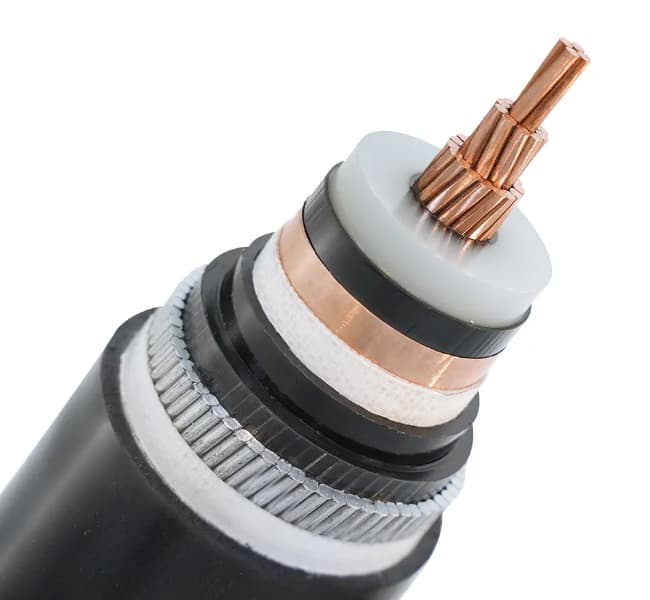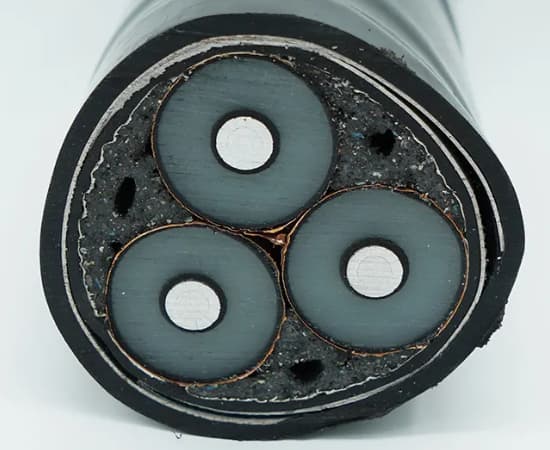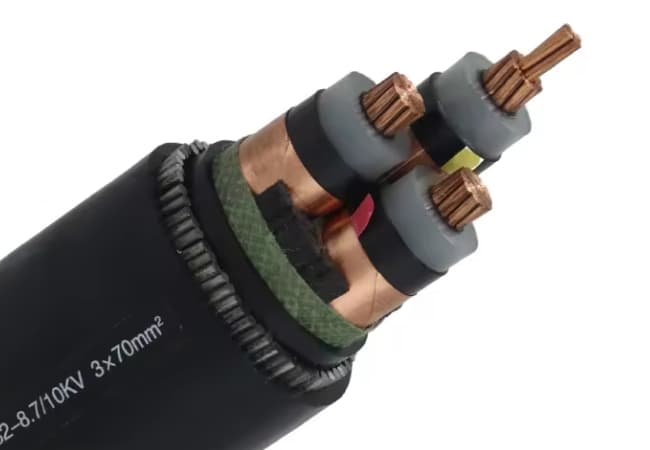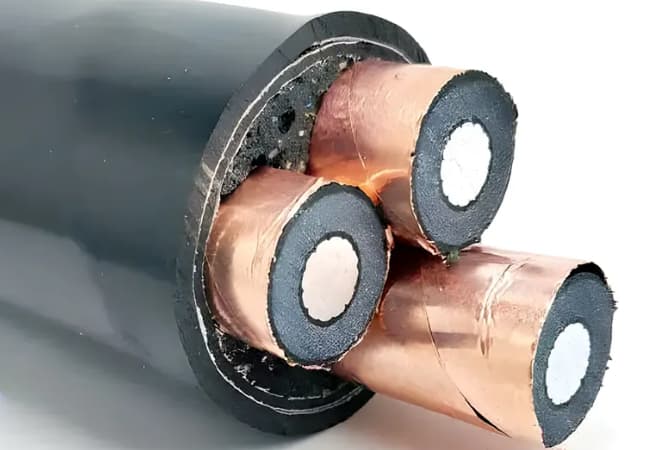Medium voltage conductors for electrical networks
Los medium voltage cables They are an essential component in electric distribution systems. Designed to operate in a voltage range that goes from 1 kV a 35 kV, These conductors allow the safe and efficient transmission of electricity from substations to intermediate consumption centers. In this commercial guide, We will analyze the different types of medium voltage cables, Your prices, applications and how to choose the right product according to the specific needs of each project.

Electrical cables for intermediate tensions: key features
Intermediate voltage cables must meet specific insulation requirements, mechanical resistance and behavior against demanding environmental conditions. The most common materials used for isolation are XLPE (cross-linked polyethylene) and the EPR (ethylene-propylene). Both materials offer excellent dielectric properties and thermal aging resistance.
Cables can be copper or aluminum, being the most expensive copper but with better conductivity. aluminum, on the other hand, It is lighter and cheaper, Ideal for large extensions.
Types of medium voltage cables more used
Underground medium voltage cable
Used in urban areas and environments where external agents infrastructure is required, he Medium voltage underground cable It usually has xlpe isolation and moisture protection and rodents. It is installed in ducts or directly buried, and its design varies according to local regulations (Como one, IEC O Ansi).
Medium air cable
Air cables are common in rural or industrial areas, And they can be type tree wire (with special vegetation coating) o spacer cable (With separators to avoid short circuits). These cables allow quick installation and simple maintenance.
Medium voltage shield cables
Los shielded cables They have a metal screen that helps reduce electromagnetic interference and improves safety in facilities close to electronic equipment. They are common in industrial environments and densely populated urban areas.
Distribution cables for MT networks
These cables are used to distribute energy from substations to transformers. They are usually tripolar or unipolar and must be certified by rules such as IEC 60502-2 o IEEE 404.

Factors that affect the price of medium voltage cable
He Medium voltage cable price depends on several factors:
- Material conductor: Copper is more expensive than aluminum.
- Insulation type: XLPE is more common, But EPR is better in wet or high temperature conditions.
- Nominal voltage: To greater tension, greater thickness of isolation and higher cost.
- Regulations and certifications: Certified cables have a higher cost, But they guarantee quality.
- Roll length or drum: Some manufacturers offer decreases for wholesale purchase.
Orientative prices
| Cable type | Section (mm²) | Estimated price per meter (USD) |
|---|---|---|
| XLPE aluminum 15 kV | 95 mm² | $5.20 – $6.50 |
| Copper xlpe 15 kV | 70 mm² | $9.80 – $11.30 |
| Copper EPR 15 KV Apantallando | 50 mm² | $11.00 – $13.00 |
| XLPE aluminum 35 kV | 120 mm² | $9.00 – $11.00 |
Use: Prices vary according to the region, supplier and market conditions.

Common Medium Voltage Cable Applications
Industrial projects
The factories, refineries and energy plants require cables that support high loads, Aggressive environments and long shelf life. The EPR cable is usual in these environments for their resistance to oils and moisture.
Urban infrastructure
In cities, Underground cables are preferred to avoid visual pollution and protect the network. They are common in hospitals, shopping centers and subway stations.
Rural and agricultural networks
Air cables are chosen, that reduce the installation cost. Tree Wire offers good resistance in areas with vegetation.
Renewable energy
Solar and wind farms require flexible cables, resistant and durable. Easy and easy to maintain are prioritized.
Tips for choosing the correct medium voltage cable
- Verify the operating voltage and expected load.
- Choose the type of isolation according to the environment: seco, wet, chemical, etc.
- Check the local regulations and certifications required.
- Evaluate the type of installation (aerial or underground).
- Request technical advice from experienced suppliers.

Conclusion: An essential guide for buyers and professionals
Medium voltage cables are a critical investment in any modern electrical system. This guide seeks to help professionals, installers and buyers to make informed decisions based on the application, The type of cable and the available budget. Choosing the appropriate cable improves efficiency, the security and durability of the electrical system.
If you are looking for a reliable supplier or you need personalized advice, Do not hesitate to contact us. We are here to help you electrify your projects with security and efficiency.
